Qazvin TRAVEL GUIDE
Things to Do in Qazvin– Activities & Attractions
—————————Ο————————

Things to Do in Qazvin– Activities & Attractions
—————————Ο————————
Qazvin is one of the most historical cities of Iran and once was the capital for part of the Safavid history. Sights of Qazvin has given this city the first rank in having historical buildings in the country . Qazvin was also a crossing point for traders and merchants due to the Silk Road. Qazvin is also home to many great Iranian Artists such as Mir Emad Qazvini (1554-1615) and in addition to all this, is also a city of delicious dishes and sweets.
The sights of Qazvin include a wide range. In fact, there are several museums, several churches, several historical markets (Bazaars) and a large number of monuments in this fascinating and spectacular city.
The city of Qazvin was chosen as the capital of Iran during the Safavid rule and as the main center of government always enjoyed the special attention of the rulers. That’s why Qazvin has the first place in Iran in terms of the number of historical monuments and tourist attractions.
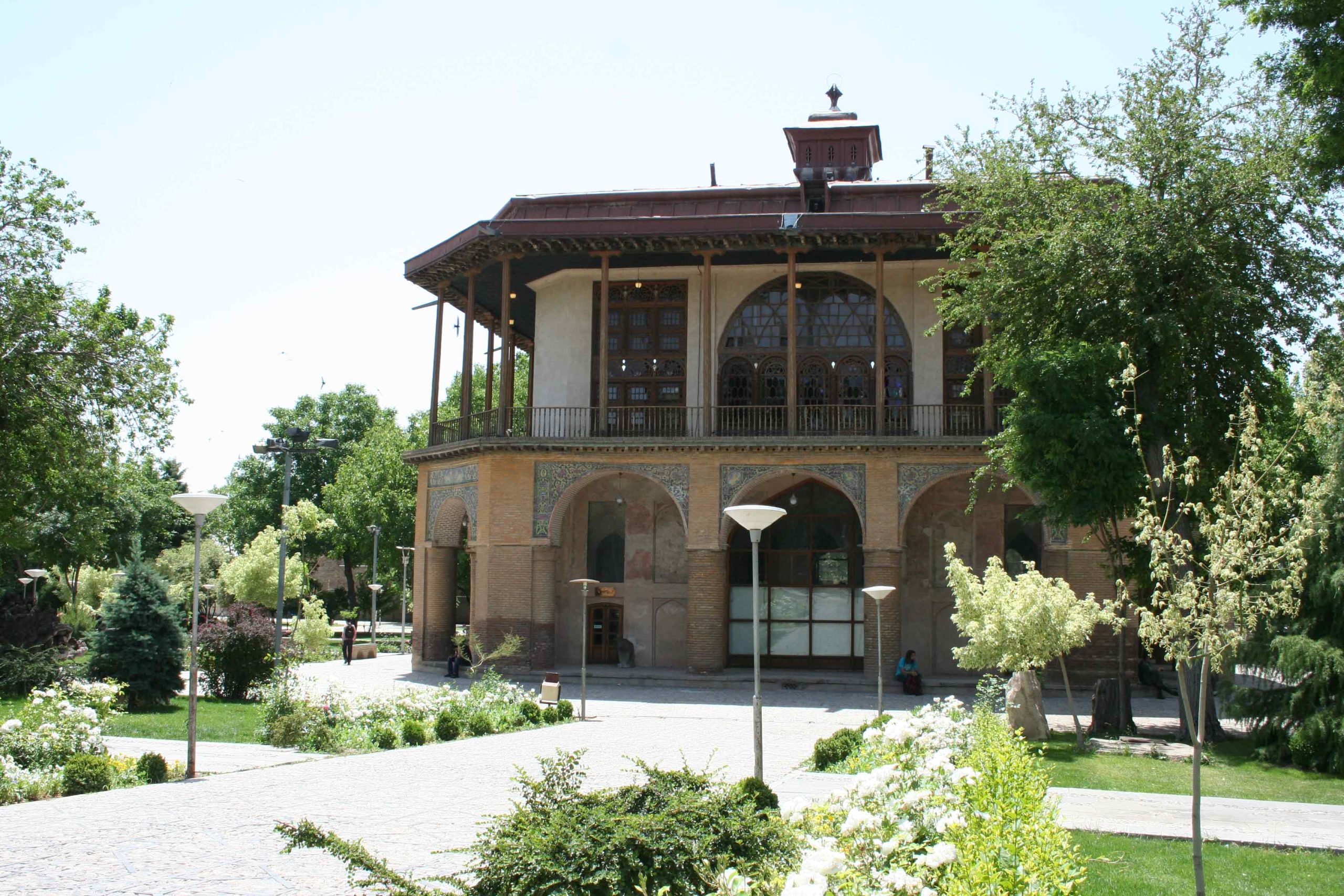 Qazvin Chehel Sotoun Edifice
Qazvin Chehel Sotoun Edifice
Chehel sotoun or Forty Columned Edifice is a Safavid palace located in old town of Qazvin. This square shaped mansion was built when Shah Tahmasb, the Safavid king, transferred the capital to Qazvin due to the treat of Ottoman Turks. The palace is constructed according to the design of a Turkish architect with a hall in the middle of a beautiful garden which has very attractive wooden windows.
as Qazvin is known as the capital of calligraphy of Iran, the palace which is dedicated to a treasure including various interesting historical and ancient objects was later turned to the calligraphy museum of the city after renovation.
The wall paintings of the first floor are indicating the miniatures of the Qazvin art school that has a global reputation in miniatures and paintings.
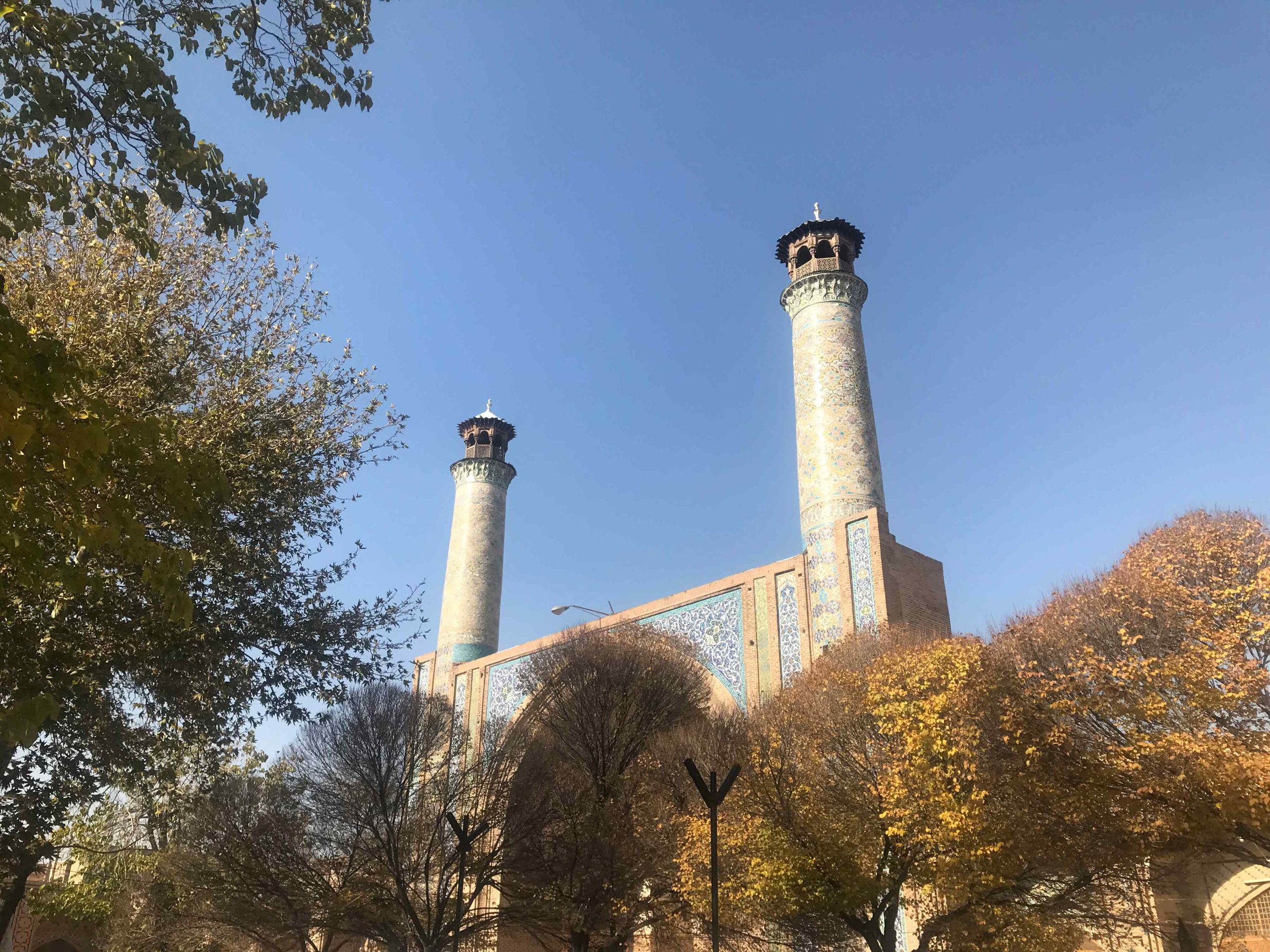
Jame Mosque of Qazvin is one of the oldest mosques in Iran built originally during 9th century on the ruins of an ancient fire temple.
The double layered main dome of the mosque is built during Seljuk era, and was decorated by beautiful tile work during the late Safavid era when the mosque was expanded.
This old mosque has a Shabestan containing some precious examples of relief calligraphy from 11th century and a water reservoir, both now under the protection of Iran’s Cultural Heritage Organization.
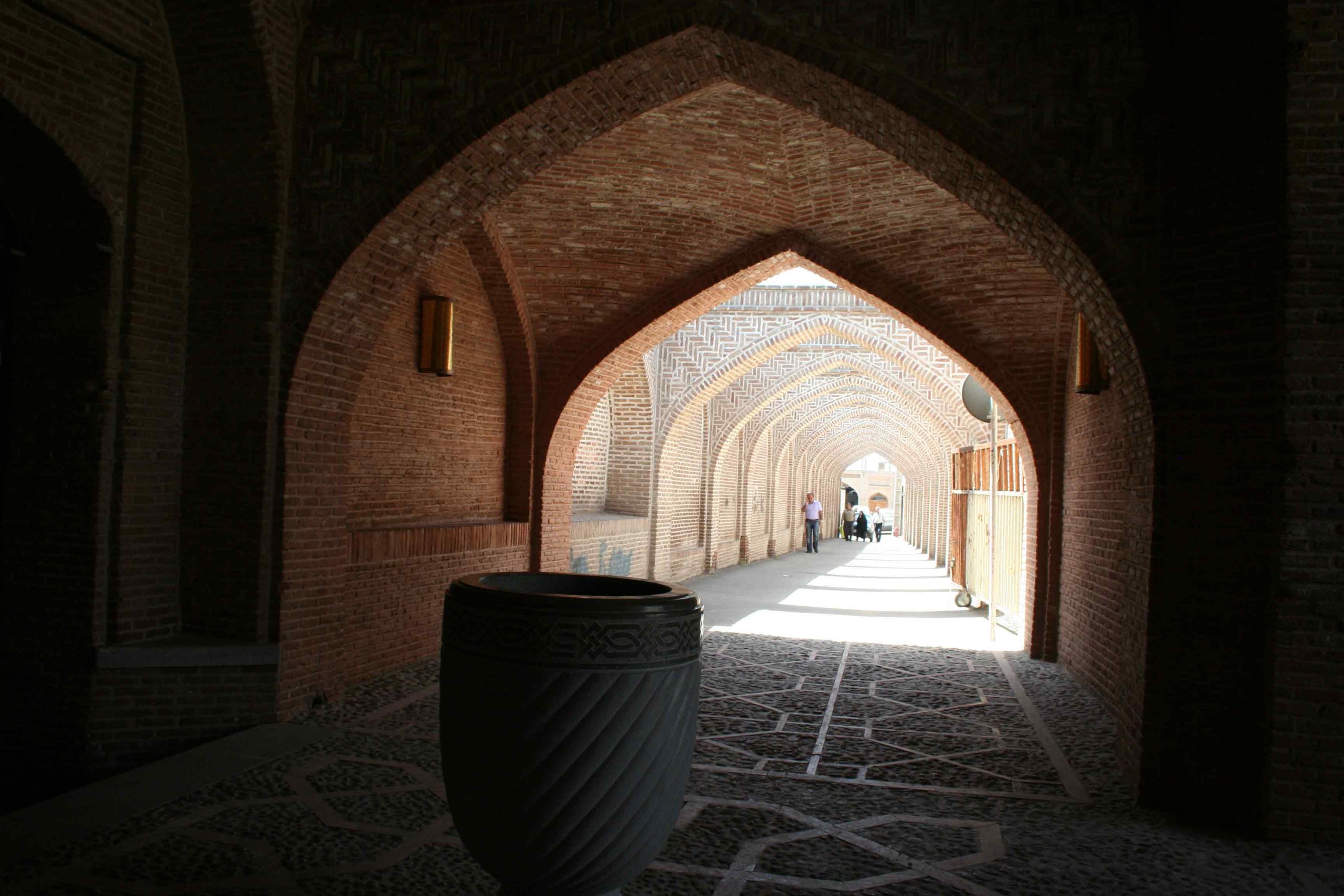
The 135-year-old Caravanserai of Sa’d al-Saltaneh is the world’s biggest urban caravanserai located in the Iranian city of Qazvin.Built during the Qajar era, the caravanserai is one of Iran’s best preserved urban caravanserais.The caravanserai was built by Baqer Sa’d al-Saltaneh with the aim of boosting trade in the city of Qazvin. This large complex consists of: four commercial courtyards, three administrative complexes, two rows of merchant stalls alongside a magnificent domed hall, one small bazaar, and two bathhouses – all in an area of 16,700 square metres. There is an entrance from Imam Street into the main courtyard of the caravanserai. The condition of this entrance shows how the main entrance hall was lost when the street was widened. There are commercial stalls surround the main courtyard. In the centre, there is a small pool that was likely filled via auxiliary aqueducts. A smaller yard with pillars sits west of the main courtyard, and has several stalls and sleeping areas that were used to store merchandise.
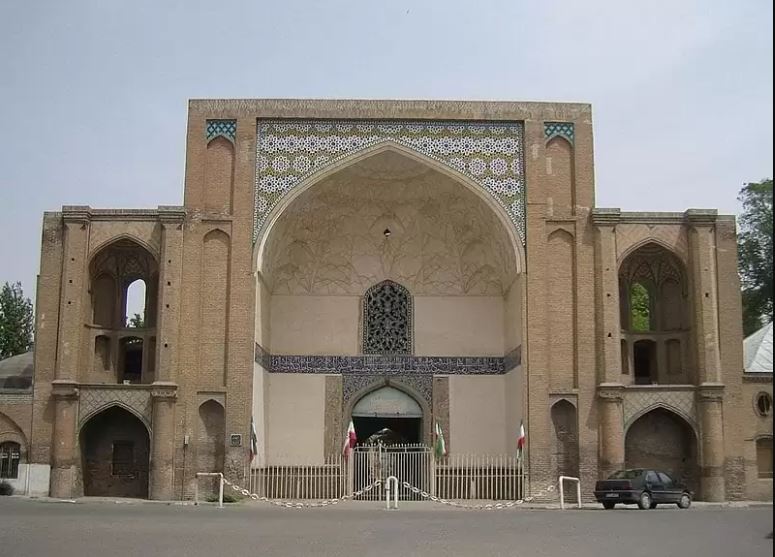
Sepah Street of Qazvin is the first designed Iranian street that was built during the reign of Shah Tahmasb Safavi. Sepah Street in qazvin, also called Ali Qapu or Government Street, But today it is known as Shohada Street. From the north side it leads to Chehelston Palace and Ali Qapu, and from the south side leads to the Old Town Mosque and from beyond leads to Salamgah Street. The east side of the street is also filled with old style brick shops. The street is apparently derived from the name of a neighborhood called Herat Street where King Tahmaseb have lived there, in the Crown Prince.
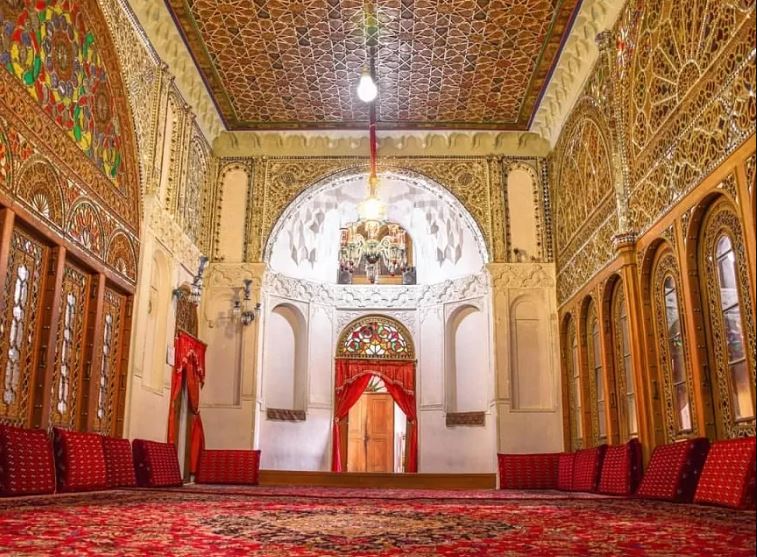
Aminiha House and Hosseiniyeh is a beautiful luxurious house in Qazvin which belongs to Haj Mohammad Reza Amini, a reputable merchant, and a part of house was devoted to Hosseiniyeh in 1275 AH (1858 AD).
Today, four yards and various parts have remained on the ground floor and in the basement. The most beautiful part of the house consists of three halls parallel with each other which are connected through beautiful Orosis.
Having nine spans of Orosis and colorful windows, the southern hall is an art masterpiece. The ceiling of the halls is decorated with paintings, mirror work, bowl racks, stucco, and wooden Girih tiles. There are a crypt, basement, soda shop, etc. under the halls.
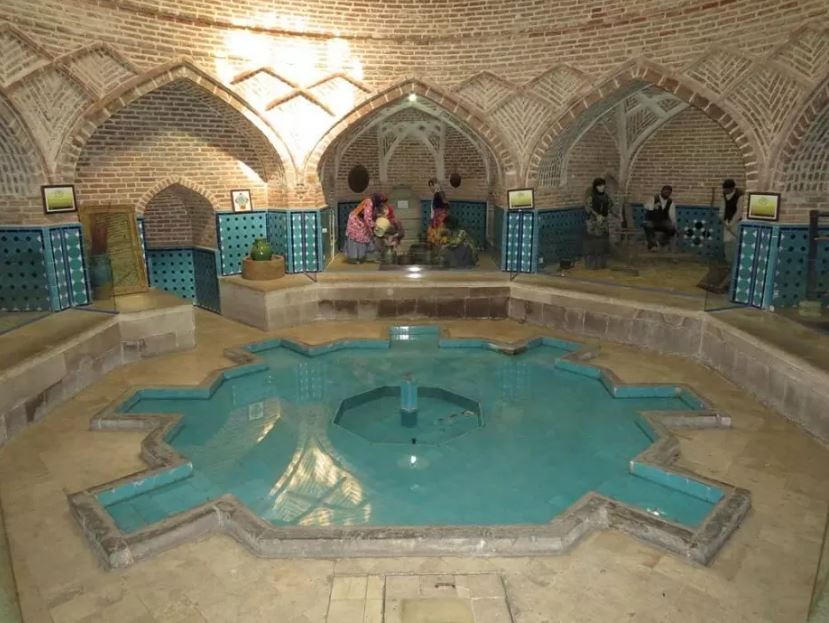
One of the spectacular attractions in the city of Qazvin, which is recommended to any first time visitor, is the Qajar bath. It is a beautiful small old Persian bath located in a tiny alley at the heart of Qazvin. It is now converted into an anthropological museum. This historical attraction used as a museum today was built in 1647 by the order of the famous Safavid king Shah Abbas II. The total area of Qajar bath is about 1045 m2 and consists of two separate parts for men and women and three main parts of Sarbineh (Cloak Room), Mian-dar and Garmabeh. The main door of the bathroom opens to the south and leads to the Sarbineh with a spiral staircase. The large Sarbineh of the bath, in the middle of which there is a beautiful pond (Hawz), has six elevated platforms where customers once sat for rest before and after washing. There was another door to the bathroom from the west, which was probably for women.
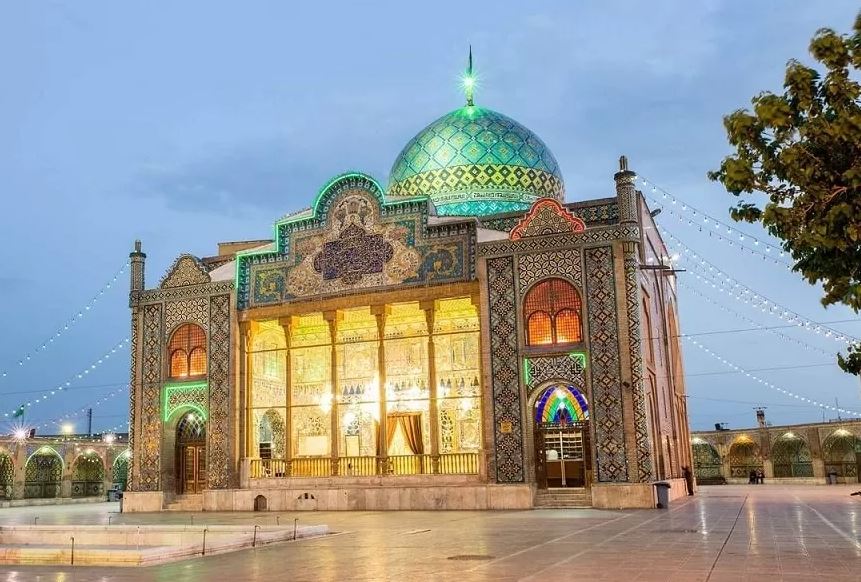
The stunning building of Shazdeh Hussein is the mausoleum of one of the numerous sons of the eighth Shiite imam, Imam Reza, located in city center of Qazvin.
The shrine was first built in 1220s however during the reign of Safavid kings it received some restoration and became a magnificent architectural complex and .the actual mirror work inside the building was added to the building in 1840s.
A vast courtyard, flanked by the northern and southern gates, provides enough space to gaze at the edifice. Of all the entrances, the northern one is an imposing piece of work. Geometrical patterns, decorative tile-works, tall gates, and 6 mini-minarets have given the northern entrance a unique style.
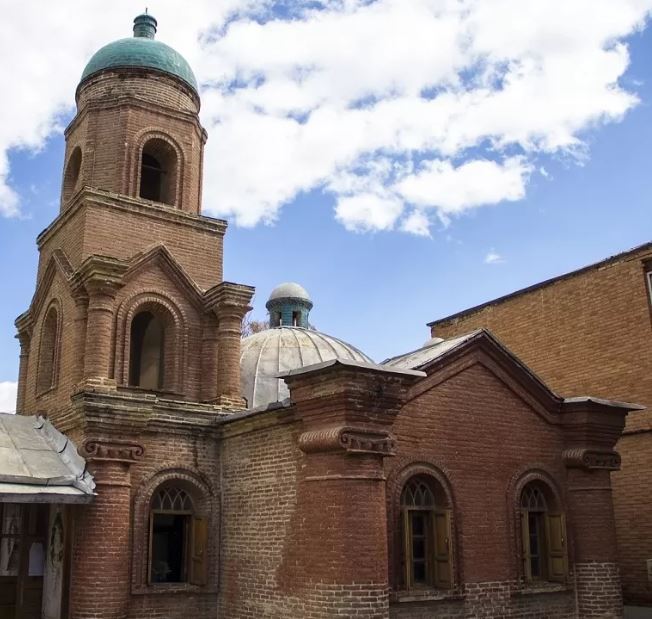
After Nasser-e-Din Shah‘s (Qajar King r. 1848-1896) visit to France, road construction projects began between the cities to connect tehran with Europe. The road Tehran – Qazvin was built by Saad al-Saltanah, Qazvin’s later governor, but the Anzali road construction was performed by a Russian company called “Insurance and Transport“. The company was handled by a man named “Anatoly Nekalayevich Bastelma“. During the construction project, Russian engineers built a small church in Qazvin, easily recognizable by its red brick structure and turquoise dome.
This church, locally known as the bell tower, has a cruciform design with a large dome in the center of the sanctuary and a smaller dome at the top of the east-facing altar. The entrance of the church is located on the western side and includes the entrance space with a pitched roof at the gate. After the entrance, there is anteroom above which a three-story bell tower is erected about eleven meters high with a small dome above it. The Russian crosses, which hang only on the two sides of the entrance walls, indicate the nationality of its creators.
The churchyard is relatively small and there are tombstones around it. One of the tombs marked with a black stone belongs to a Russian engineer named Nikolai Alexandrovich who died during the road construction. In addition to the tombstone, there is another stone in the church owned by a Russian pilot reportedly crashed around the city during World War I, and the body of the pilot was buried inside the church.
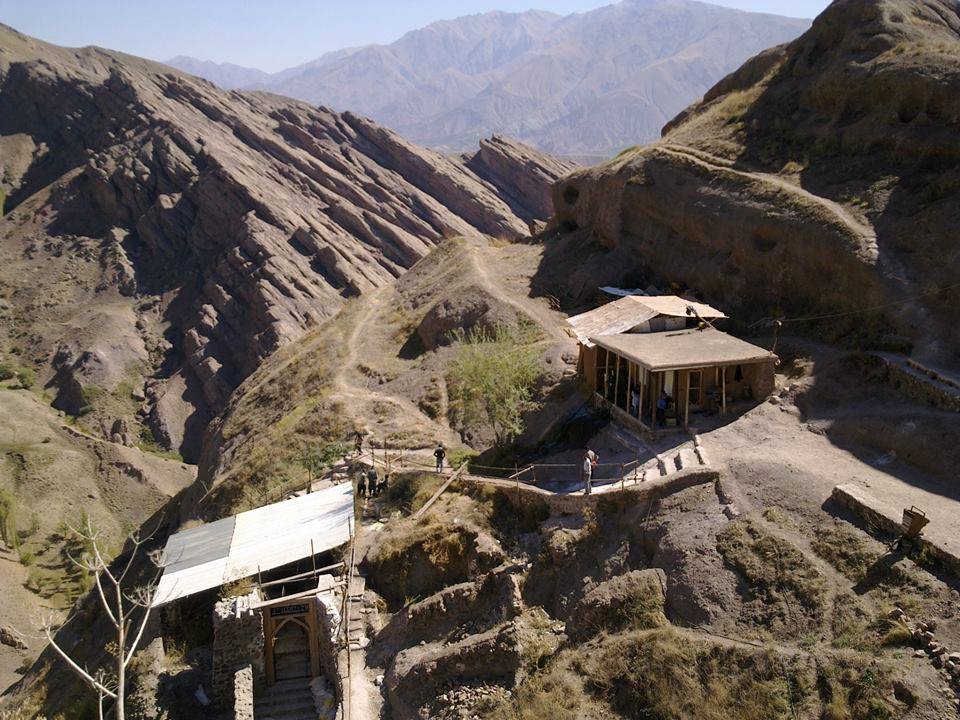
Alamut fort is located in the northeast Qazvin province near Gazorkhan village at an altitude of 2163 and. the fort has only one entrance on its northern face with more than 400 stone steps. There is a gorge on the southern slope of the mountain that blocks any way of penetration. The castle is almost 120 meters long and between 10 to 35 meters wide.While standing at the top of the fort, a distance of about 10 Km can be seen.
This fortress was used as the residence of Hassan Sabah, the leader of the Ismaili sect who was born in Qom in a Shiite family and spent some time studying in a theological madrasa in Neishabour, northeast Iran. Later He moved to Egypt where he continued studying for 3 more years after which he returned to Iran and settled in Alamut Where he began expanding his influence outwards to nearby towns and districts, using his agents to gain political favor and to intimidate the local populations. He Spent most of his days at Alamut producing religious works and developing doctrines for his order, the Assassins order.
Shortly after establishing their headquarters at Alamut Castle, the sect captured Lambsar Castle, to be the largest of the Isma’ili fortresses and confirming the Assassins’ power in northern Persia.
Hassan Sabah died of an illness after living in Alamut Castle with his family for 35 years. later, the Mongols burnt and destroyed his tomb and his fortress.
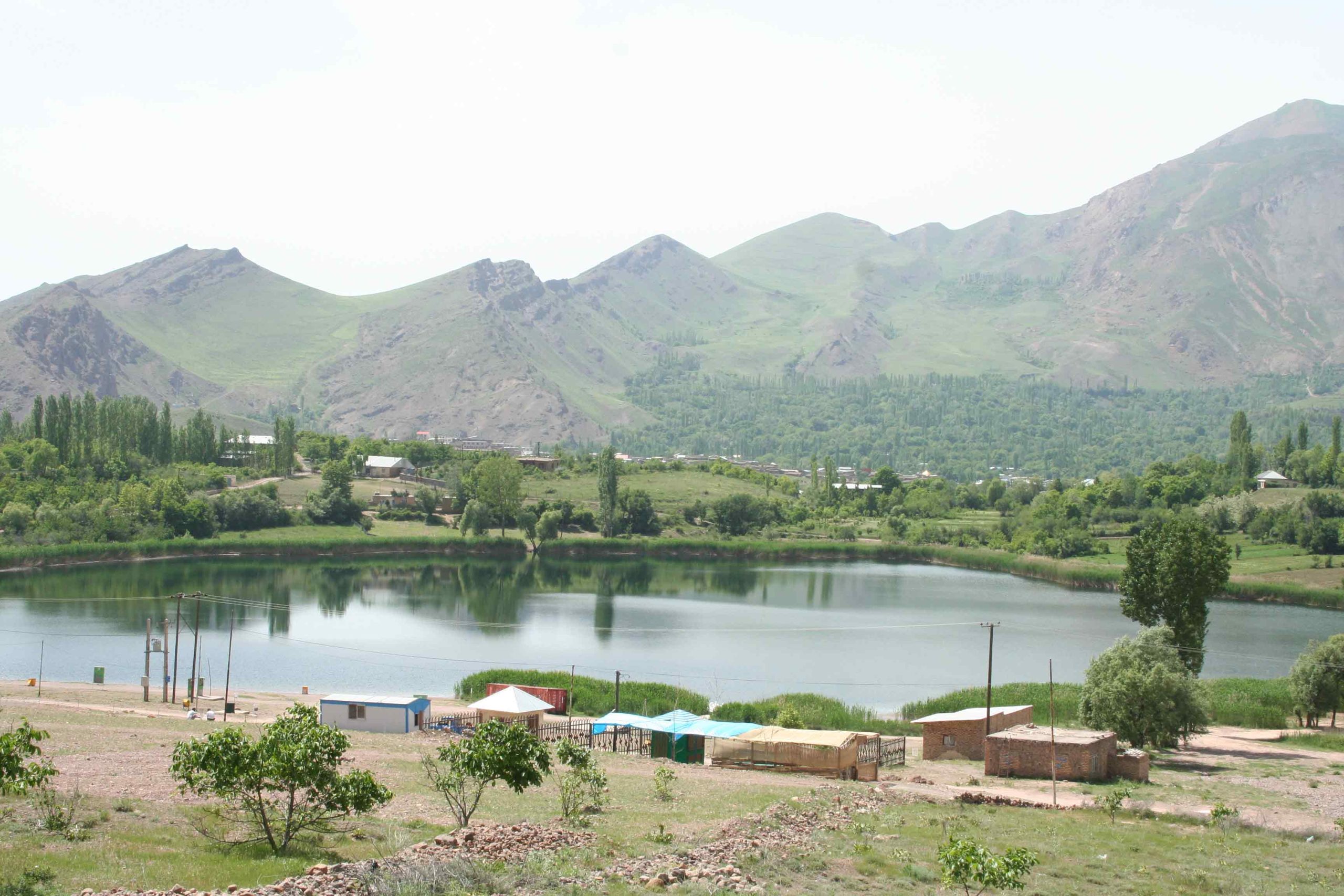
located in the historical region of Alamut, Ovan Lake is the largest and most beautiful lake in Qazvin province, 85 km north of Qazvin, between the four villages of Ovan, Verben, Zavardasht and Zarabad in Qazvin. This freshwater lake has an area of more than 70,000 m2 and its depth at the deepest point is about 6 m. Most of the lake’s water is supplied by springs in the lake bed and a small percentage by rainfall. In fact, the constant input has caused the water of Lake Ovan to be clear and transparent. Lake Ovan is home to a variety of spotted trout, carp and pikes, and in the fall is home to migratory birds such as swans, geese and ducks. Lake Ovan attracts many domestic and foreign tourists in the four seasons of the year with its mesmerizing landscape. The lake is a place for fishing and boating in summer and camping is allowed by the lake.

One of the most famous and laborious dishes is “Qeyme-nesar”. Made with rice, fresh meat, pistachio, almond, saffron, orange peel and barberry, it’s the perfect meal for important gatherings. You have to try “Halim-Qazvin”. Halim is a kind of pottage that you can find all over Iran, but each city’s Halim has its own unique taste. In Qazvin it’s made with meat, barley, flour and wheat. If you like your meal sweet, “Shirin-polo” and “kuku-shirin” are the right dishes for you. Shirin-polo is either sweetened with sugar or juice and made with rice, meat, syrup, rose water, saffron, butter, pistachio and almond slices, onion and other spices. Kuku-shirin is a tasty appetizer usually severed alongside the main dish. The main ingredients are potatoes, eggs, yogurt and flour. “Dimaj” is not only a popular healthy snack in Qazvin, but also one of the traditional foods in other cities in Iran.
“Ash-aloo” is a pottage made with plum which is loved by many in here! If you want a vegetarian dish You can try “Anar-polo”. It includes rice, pomegranate, tasty spices and it can be served with or without meat.
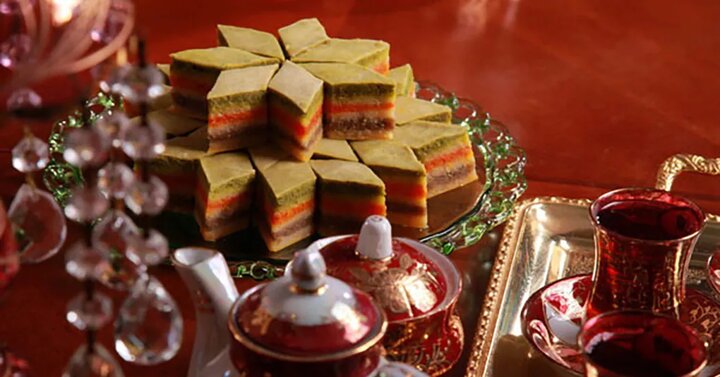
Carpet weaving, strip weaving, calligraphy and embroidery are only a few of Qazvin’s souvenirs. Qazvin is the center of Painting behind glasses, it has a long history and you can find most of them at museums. Metal meshing is also one of Qazvin’s belongings in art; first it was used for making mirrors and candlesticks, but now you can find it in dishes, pots and other containers too. “Nam-nam-doozi” is unfortunately facing extinction, but in the past, you could see it a lot when it came to decorating fabrics. “Nam-nam” means slowly in Persian and the reason behind this name is because sewing them requires a lot of work and delicacy, so the progress of making it goes slowly. If you like to take some sweet and tasty souvenirs home, make sure to give “Nan-nazok”, “Nan-chayi”, “Keyk-sharbati” and Atabaki sweets a try! If you’re a fan of sour-sweet meals, Qazvin is just the right place for you. Due to its fertility characteristic, there are a lot of various and colorful dishes to try out!